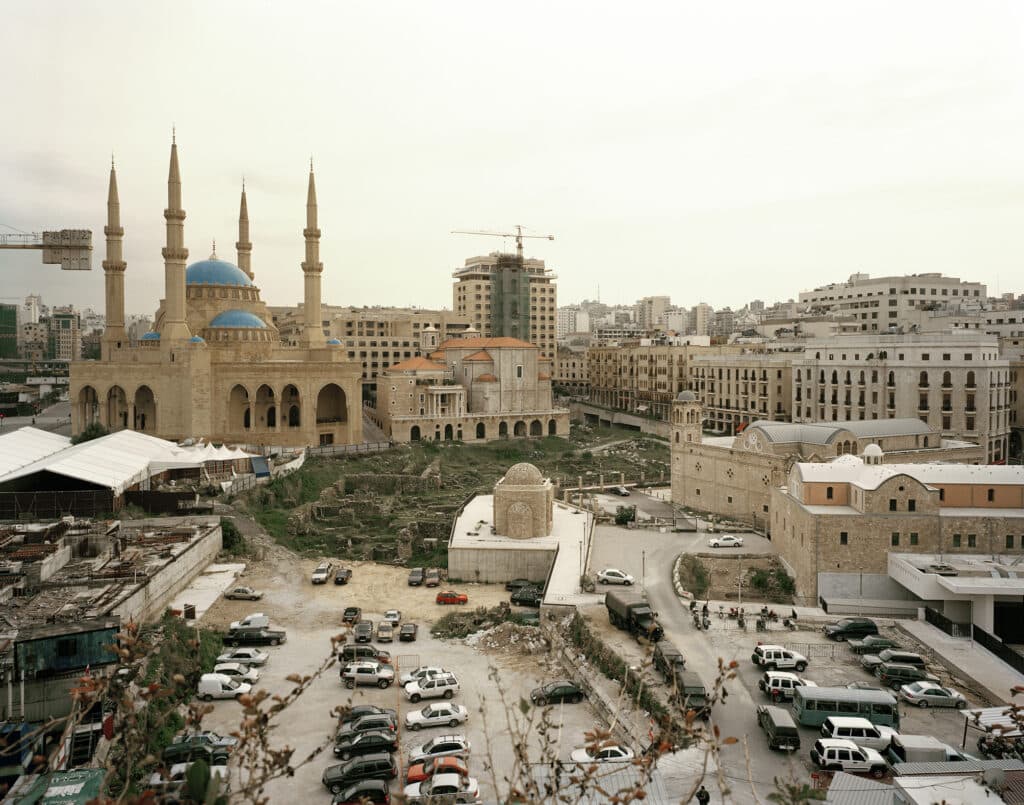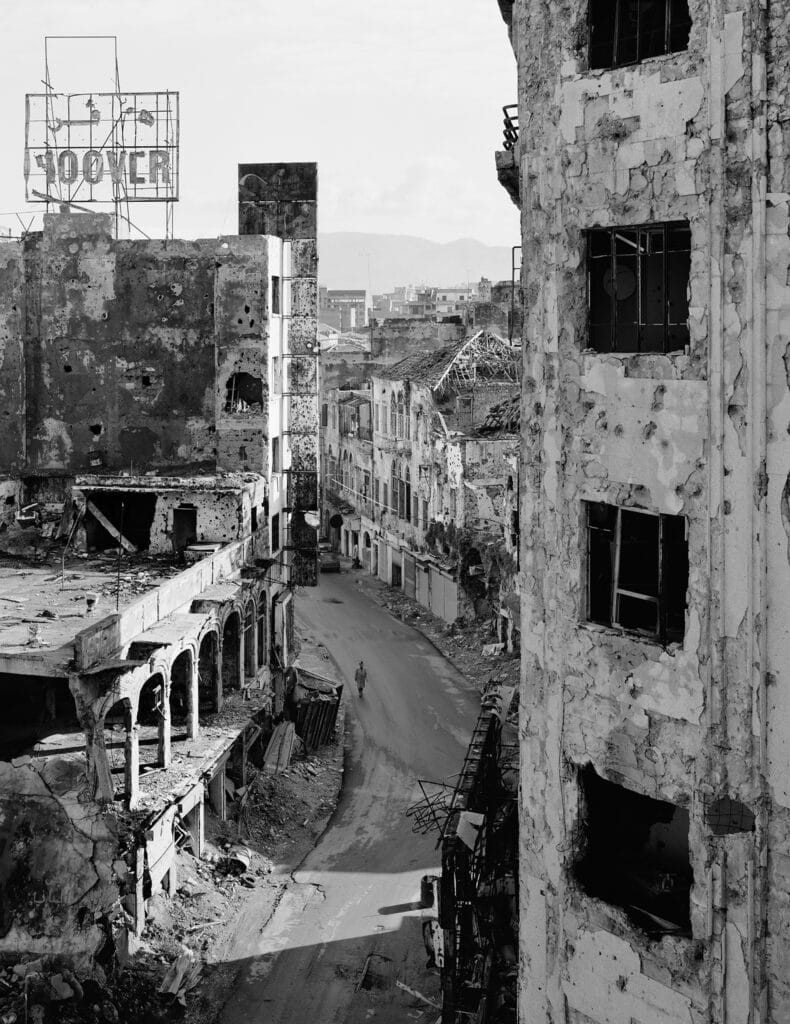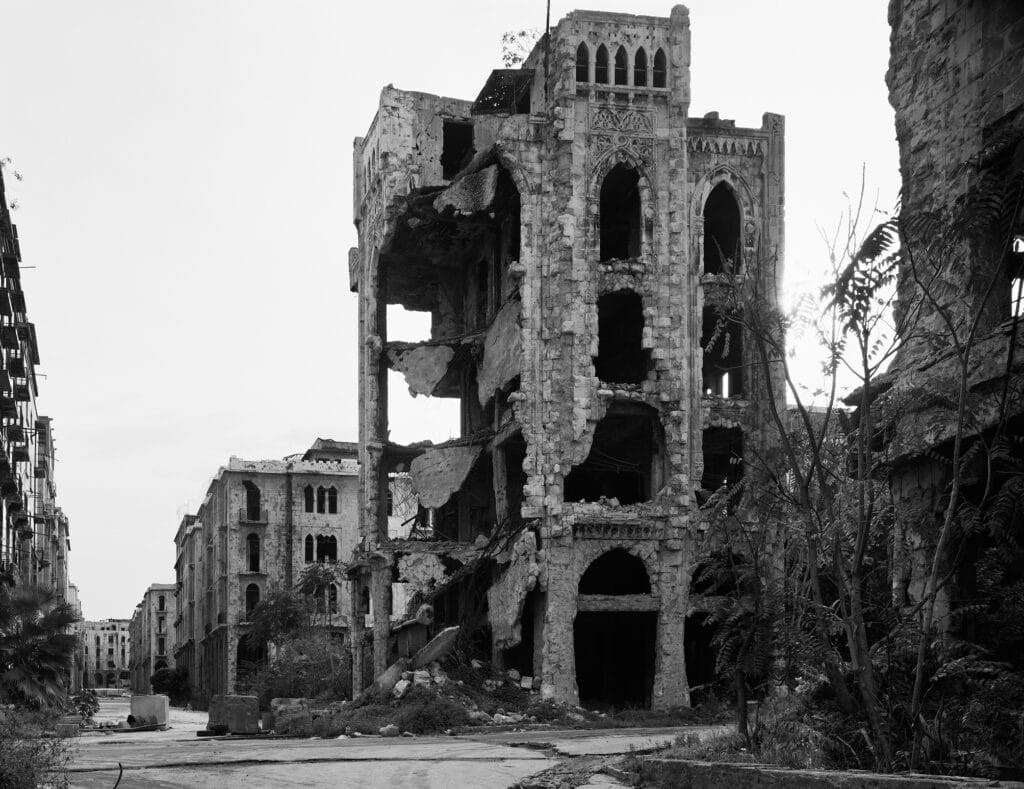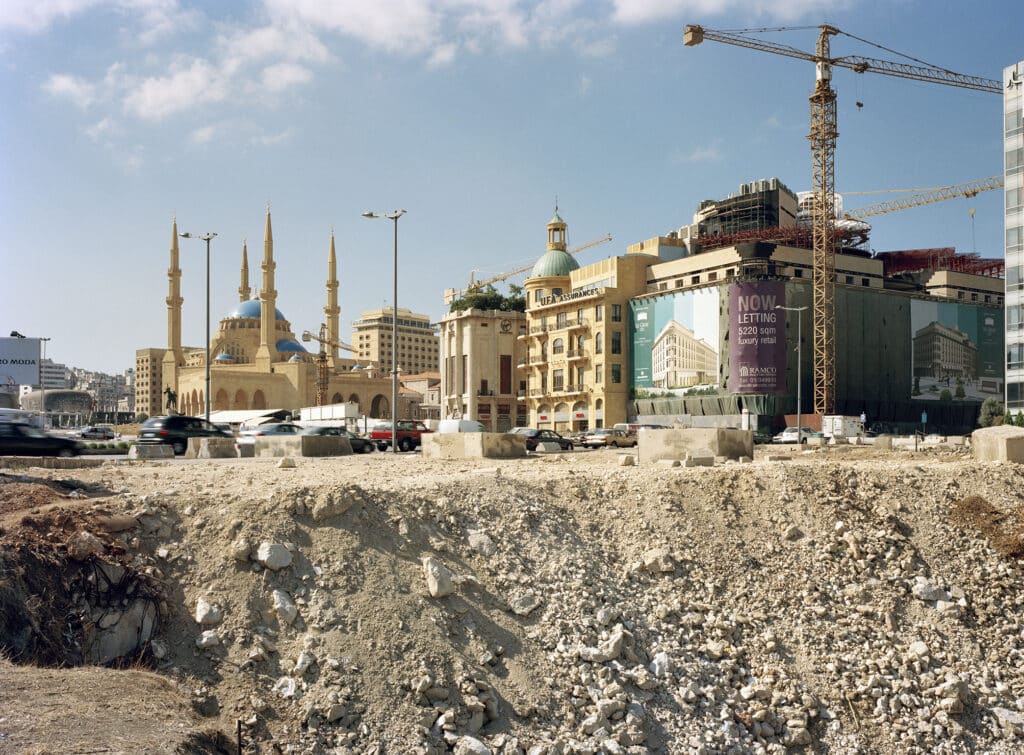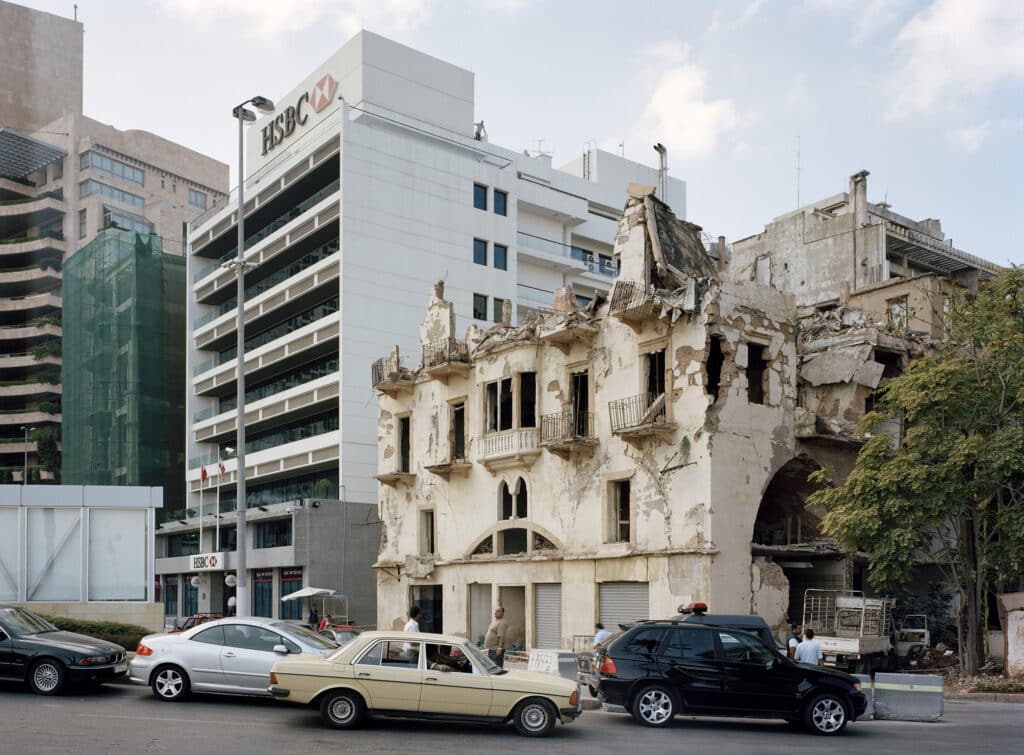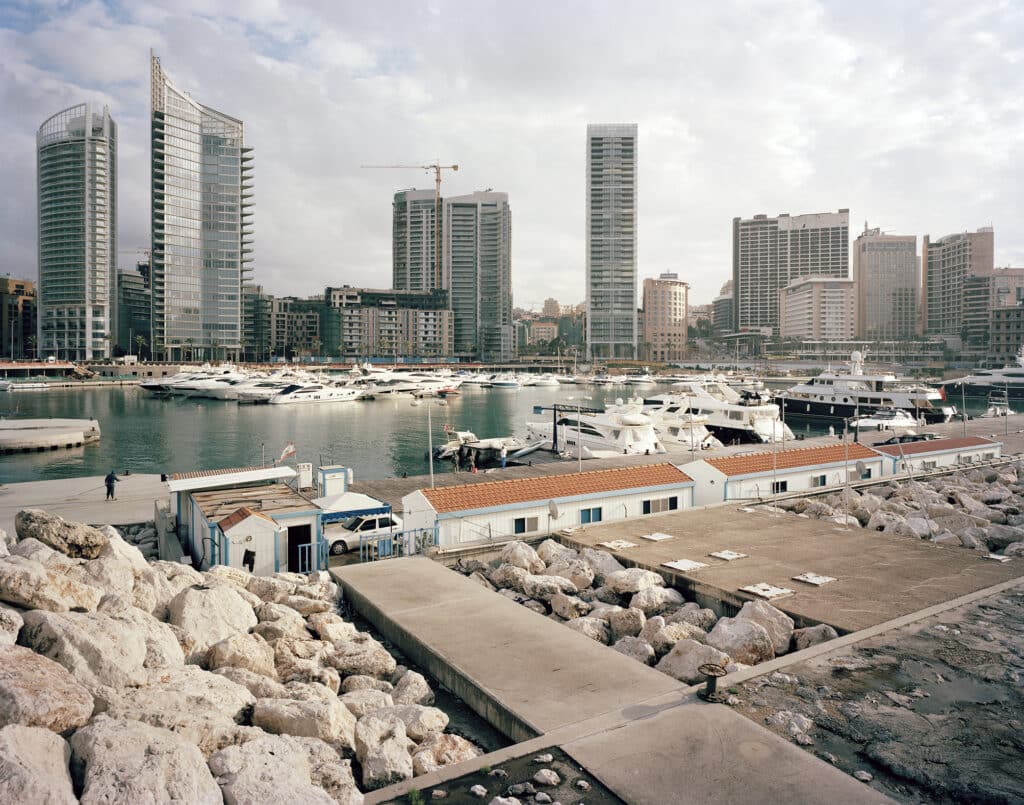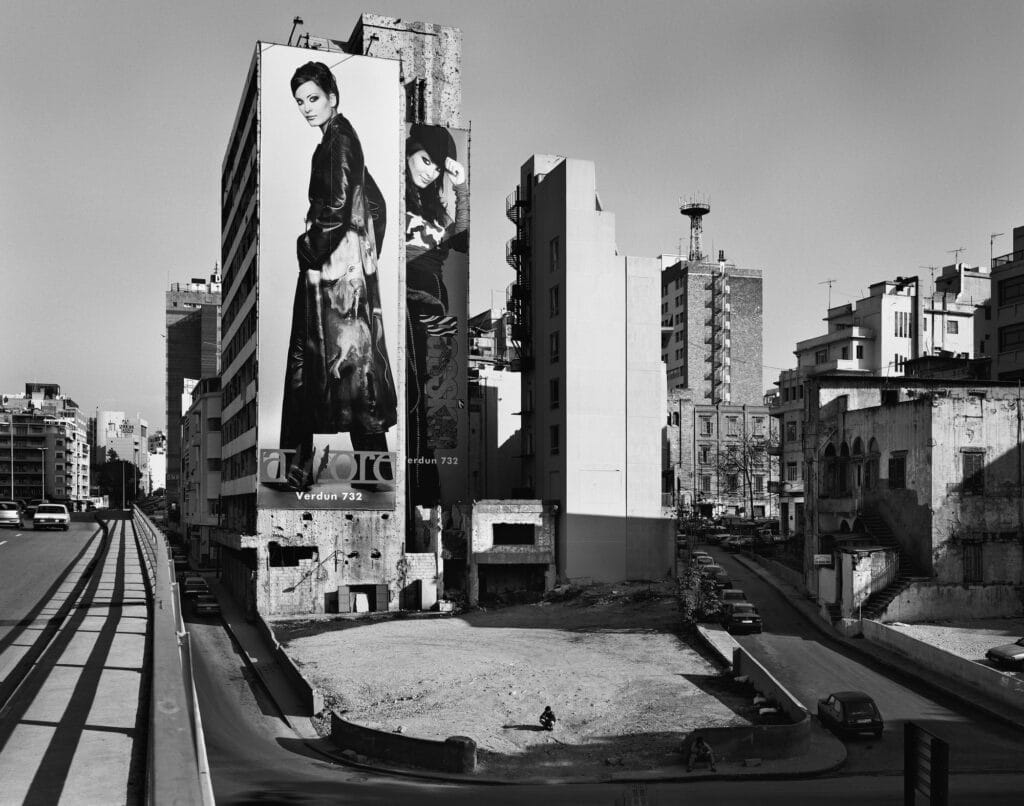For nearly twenty years, Gabriele Basilico photographed the soul of Beirut. The exhibition “Back to Beirut” at the Château d’Eau gallery in Toulouse features the first retrospective of the four major photographic assignments fulfilled by the Italian photographer, respectively, in 1991, 2003, 2008, and 2011.
The exhibition is a tribute to the artist who passed away in 2013 and who had forged a strong bond with the Lebanese capital since his first visit in 1991. On that occasion, Basilico participated in a documentary campaign on downtown Beirut, a city scarred by a lengthy civil war that had begun some fifteen years earlier, in 1975. The project was conceived by the Lebanese writer Dominique Eddé and funded by the Hariri Foundation. Besides Basilico, René Burri, Raymond Depardon, Fouad Elkoury, Robert Frank, and Josef Koudelka also took part.
“It was not a question of reporting on the ruins, but of conveying a ‘state of things’ based on a free, personal interpretation [of] the wounded, outraged city. … [This] required a special sensitivity, special attention, participation but also respect,” noted Basilico on his return from another Beirut assignment in March 2012.
Whenever he found himself back in the city streets, amid its buildings and squares, the photographer bore witness to an urban metamorphosis. “It’s as if I were returning after an immemorial time, a time out of time that contains a fragment of world history, the memory of a world cast in the mold of the physical reality of a place,” Basilico wrote in the book Gabriele Basilico: Ritorni a Beirut.
The photos of the battered, yet constantly metamorphosing, city have exerted influence over a whole generation, including the French-Lebanese Sabyl Ghoussoub. A Paris-born writer and journalist, Ghoussoub won the Goncourt des Lycéens Award for his novel Beyrouth-sur-Seine (Stock, 2022), a humorous, moving tribute to his Lebanese parents who settled in Paris after fleeing the civil war.
A contributor to Blind, Ghoussoub, “born in Beirut in a street of Paris,” revisits the capital of his memory brought back to life in Gabriele Basilico’s images.
Did you know the work of Gabriele Basilico?
I was familiar with his images, particularly those taken in 1991, when Dominique Eddé commissioned him to photograph the city at the end of the war (1975–1991).
These series were very important to people of my generation. I think of myself as a war child: I was born in 1988, and I know this ruined Beirut only through images. My memories of those years are very faint.
I find Basilico’s photographs beautiful, a fact which I find disturbing. To find beauty in a landscape that shattered the lives of my parents, of my relatives, of this country, is disturbing, but perhaps this is the miracle of art, of photography, to stir up our emotions.
The earliest images, of a battered city, date back to 1991, and the latest, taken in 2011, show Beirut undergoing modernization. What does the city look like now, in 2023?
To speak of Beirut in 2023 is to evoke the double explosion of the port that devastated part of the city on August 4, 2020. Some neighborhoods had become unrecognizable: the destruction of the port was apocalyptic; in its wake there was nothingness, emptiness, death—a landscape that I do not wish anyone to see.
During my last stay a few weeks ago, I also realized that the city I had known, in which I had lived (and I’m not talking about the 1970s but about Beirut in the 2010s) had already disappeared.
“The Beirut I knew no longer exists.”
Most of the galleries, bars, cinemas, theaters, and restaurants which I used to frequent no longer exist. At the age of thirty, I can already say what my parents once said: “the Beirut I knew no longer exists.” It is disturbing. The poet Etel Adnan said that exile is also that: not recognizing your own city, your own streets.
Since 2019, we’ve had a revolution, an ongoing economic crisis, and the double explosion in the port: all these events have changed the face of the city. Beirut still eludes us: it is a fact that we must accept.
Trained as an architect, Basilico focused on photographing streets and buildings in Beirut. How would you describe the city’s architecture?
I would like to quote the anthropologist Sophie Brones. In her book Beirut dans ses ruines, she speaks of Beirut as “a city-palimpsest.”
Referring to the different layers of city planning, Brones writes: “Made not of ink, but of stone, concrete, and other materials, [these layers] are represented by buildings of various periods that together form a landscape: Ottoman houses with red tile rooftops; apartment buildings built on the same model, around ‘a central hall’; residential and other buildings of the modern era; towers which, from the 1970s onward, have never ceased to grow in height; but also ancient and medieval ruins, as well as buildings partially destroyed during the civil war and never rebuilt, their walls pockmarked with bullet holes, their floors collapsed. Or yet, other, temporary ruins, the result of recent demolitions carried out to satisfy financial speculation.”
What do these places evoke for you?
They are all familiar. My family, like so many other Lebanese families, have archives full of images of the city destroyed in 1991. They filmed and photographed these ruins. It’s interesting to compare Basilico’s images and those taken by my parents; his view as a foreigner and a professional photographer and their view as native Lebanese and amateurs.
“My parents’ Beirut is like a Little House on the Prairie, Lebanese style.”
For the other series taken in 2003, 2008, and 2011, I could describe every street corner, every building, every view of the sky. Even the reflection of the rain on the asphalt, the smell that emanates from it, especially in winter. I don’t believe in blood ties, but with Beirut, many Lebanese feel this connection, it’s visceral. Basilico has captured Beirut.
As you mention in your book Beyrouth-sur-Seine, your parents created a “Beirut at home” in Paris. What is it like?
It is a Beirut of smells and sounds, but also a Beirut of their youth, before Gabriele Basilico’s photographs, before the war, a Beirut where there were many trees, where you could still see the sea, where there were no ruined buildings, where you could find cinemas and theaters on every corner, the fantasy of an idyllic Beirut for which I have no nostalgia. My parents’ Beirut is like a Little House on the Prairie, Lebanese style.
Beirut has always been the main character in your books…
This city haunts me, but I don’t believe in personifying cities. A city is a city. It comes to life thanks to the characters who evolve with and without it. It becomes alive when we love it, hate it, or miss it.
“I have never managed to photograph Beirut well; this city has always eluded me in my images.”
One of the most beautiful sentences about a Beirut connection is by Georges Boustany, a writer, journalist, and collector of Lebanese archival photos: “Beirut will follow you until your last breath, wherever you are, and it is she who will close your eyelids one last time.”
In addition to being a writer, you are also a photographer: how do you portray Beirut in your pictures?
That’s just it, I have never managed to photograph Beirut well, this city has always eluded me in my images, probably because my Beirut is not only in Lebanon but also elsewhere, I managed to attain this sort of multiplicity only in writing.
I curated the exhibition C’est Beyrouth at the Institute of Islamic Cultures in Paris, where I was lucky to be able to showcase photographers who captured the city and its inhabitants. I am thinking particularly of Fouad Elkoury, Mohamad Abdouni, and of Vianney Le Caer and his beautiful series Beirut Sun Tanners. The city is an inspiration for photographers, one of whom often magnifies it, infusing it with an aura of eternity: her name is Tanya Traboulsi.
Myself, I don’t have a photo project on Beirut itself on my plate right now, but I am preparing a book of photos and texts with the anthropologist Sophie Brones on images taken in Paris by my family that remind me of Beirut.
Gabriele Basilico, “Back to Beirut”, February 1–May 14, 2023, Galerie Chateau d’Eau, Toulouse
Sabyl Ghoussoub, Beyrouth-sur-Seine, Goncourt des Lycéens Award, Éditions Stock, €20.50, 320pp.
